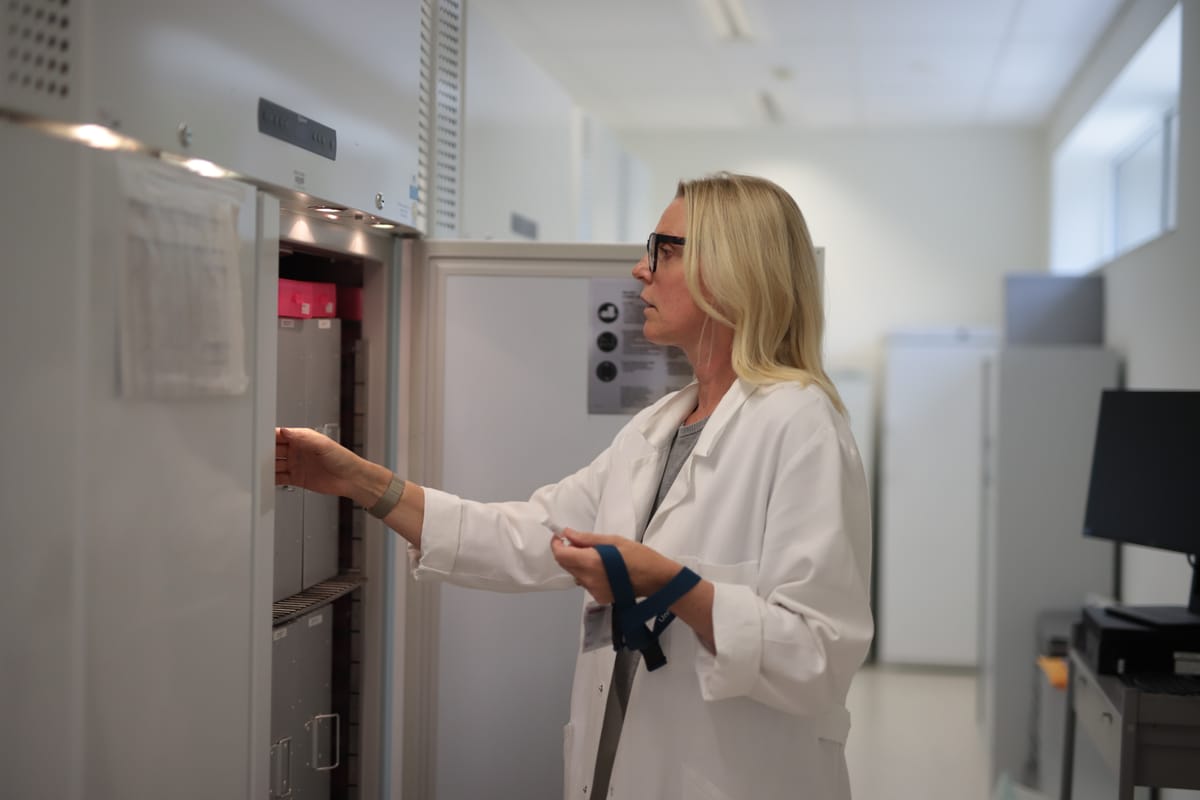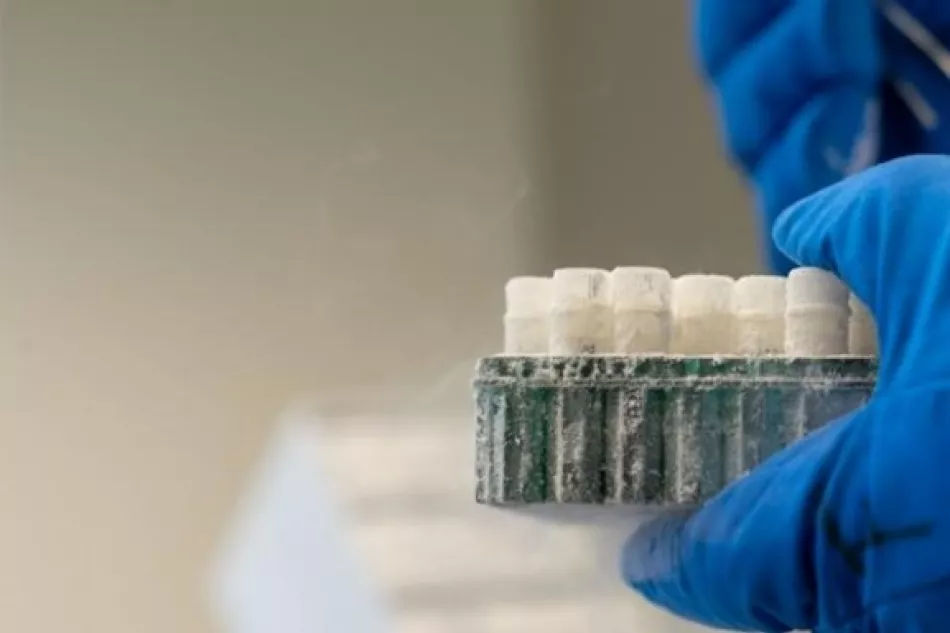More samples, less friction
Why CMN invests in a compliant, researcher-friendly biobank model

Why CMN invests in a compliant, researcher-friendly biobank model
Translational timelines are tightening. New diagnostic regulations demand larger, better-documented cohorts. Pre-analytics, consent scope, and data governance can make or break a project years later. CMN’s answer is a biobank that is shareable by default, analysis-ready by design, and fast to collaborate with.
In recent years, CMN has made biobanking a strategic priority. Coordinated by biobank lead Julie van der Zee, the center modernized collection workflows, updated informed consent to contemporary standards, and integrated as a decentralized hub within the UAntwerp/UZA biobank, combining local agility with central legal and ethical compliance.
The program now supports renewed longitudinal efforts (such as the Healthy Elderly Study led by Kristel Sleegers and Julie van der Zee) and disease-focused collections across epilepsy, FTD, ALS, Alzheimer’s, Parkinson’s, and peripheral neuropathies, with iPSC libraries planned to link directly to existing cohorts.
This turns the biobank into a practical bridge from patient cohorts to multi-omics data functional models and candidate biomarkers/targets, fully aligned with CMN’s dual axis in neurogenetics and neuroimmunology. It underpins research efforts across the center—from variant interpretation and structural-variant detection to immune phenotyping and iPSC-based disease modeling—so that samples collected today remain usable, interoperable, and impactful tomorrow.
What we built
CMN operates as a decentralized hub of Biobank Antwerp (UAntwerp/UZA; FAGG BB190007), which gives us local agility while staying within a clear legal-ethical framework.
In practice, that means collaborations start on solid ground: consent language, MTAs/DTAs and data-access terms are based on pre-approved templates jointly developed with UZA, UAntwerp and VIB legal teams. A dedicated biobank LIMS (Laboratory Information Management System) guarantees end-to-end traceability and automatically feeds the mandated metadata to the central system. On-site, monitored storage and trained staff safeguard quality and chain-of-custody, so projects are audit-ready without becoming admin-heavy.
We’re extending this model across Flanders through Banking the Brain: a federated infrastructure to harmonize sampling, consent, metadata, and access across clinical and research sites. The aim is to create a shared BioPortal, standard agreements, and sustainable cost-recovery so high-quality, analysis-ready collections are easier to find, combine, and validate against.


Our repositories
We’re building reusable reference repositories that serve both discovery and translation across neurogenetics and neuroimmunology. A core pillar is our PBMC bank, paired with DNA, RNA, serum, and plasma from neurology clinic patients, healthy elderly volunteers, as well as younger unaffected individuals.
Each collection is profiled multimodally. Clinical and cognitive data, environmental exposures, immune phenotyping, genotyping arrays, short- and long-read whole-genome sequencing, and targeted assays can all be included.
Where relevant, we select by genetic variant (e.g., APOE ε4/ε4, TREM2 R47H, PSEN1, GRN) to feed iPSC derivation and CRISPR engineering via our embedded screening facility. Low-burden sampling, including for example tear fluid, enables true longitudinal designs suited to early biomarker work.
In parallel, a growing set of Belgian/Flemish reference genomes supports population-aware analyses. The net effect is a library of materials and datasets that can move seamlessly from genetics to function to candidate biomarkers and targets.
How it accelerates research
Because the governance is in place up front, studies launch with less friction: pre-approved documentation and practiced workflows reduce start-up delays without cutting corners. Shareability is built in: consent and data stewardship are designed to enable responsible reuse with academic and industry partners, so projects don’t hit downstream dead ends.
Standardized pre-analytics and deep annotation make cohorts suitable for assay verification and validation (including IVDR-aligned needs) and for translational studies. In short, the biobank keeps options open as science evolves, while giving teams the compliance and quality they need from day one.
Examples in the ecosystem
- BELNEU (nationwide memory-clinic network): systematic recruitment across the dementia and neurodegenerative disease spectrum with standardized sampling provides an engine for biomarker discovery and clinical validation.
- 1,000 Healthy Elderly Study (longitudinal): repeat assessments and non-invasive sampling to map trajectories of cognitive aging and pinpoint early, scalable biomarkers.
- ERDERA (European Rare Diseases Research Alliance): At CMN, Sarah Weckhuysen's team contributes to the Clinical Research Network of ERDERA building on their successful TREATKCNQ project, which targets severe epileptic disorders caused by KCNQ gene mutations and exemplifies the collaborative approach needed to develop novel therapies for rare conditions.
We put our expertise in service of the research community.
Reach out if we can help you with:
Study set-up & design: protocols, consent language, and data models that maximize downstream usability.
Regulatory navigation: EC submissions, biobank registration, MTAs/DTAs, and data-access workflows using pre-approved templates.
Hosting & registration: import external collections under the CMN hub (physical storage can remain local if needed) with central registration and access management.
Provisioning: queryable catalogues (PBMCs, iPSCs, engineered lines) with clear governance for academic and non-academic partners.
Sustainability: cost-recovery mechanisms where appropriate to keep high-quality operations viable over time.
Learn more

